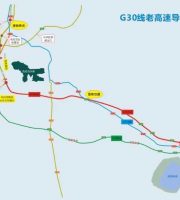11.
09 If the concrete mixing and transportation time is too long, the concrete mixing and transportation time is too long, which will cause excessive water evaporation, low concrete slump and irregular shrinkage cracks.
01 Formwork operation is not standardized (1) Formwork stiffness is insufficient.
04 Incorrect vibration (1) The vibration is not dense, uneven, honeycomb, pitted surface, and cavity, which is the origin point of reinforcement corrosion or other load cracks.
For example, when the concrete is poured in layers, the post poured concrete cannot be poured before the initial setting of the pre poured concrete due to power failure, rain and other reasons, causing horizontal cracks between the layers; When segmental cast-in-place is adopted, the contact surface of the first poured concrete is badly roughened and cleaned, the bonding force between the new and old concrete is small, or the curing of the later poured concrete is not in place, resulting in concrete shrinkage and cracks.
Due to the lack of necessary hydration water, the cement has rapid volume shrinkage.
05 When the joint of segmental pouring is not well treated for concrete layering or segmental pouring, the joint is not well treated, and cracks are easy to appear between the new and old concrete and the construction joint.
(2) The formwork is removed too early during construction, and the concrete strength is insufficient, which makes the component crack under the self weight or construction load.
After pouring, due to the large water absorption of the formwork, the concrete shrinks and plastic shrinkage cracks occur.
The concrete with unqualified construction materials is mainly composed of cement, sand, aggregate, mixing water and additives.
07 Incorrect curing method Mandatory specification requires concrete curing to be covered and watered.
Due to the insufficient settlement of the concrete before hardening, the settlement after hardening is too large, it is easy to have cracks on the reinforcement, on the junction of the wall and the slab, and between the beam and the column, that is, settlement shrinkage cracks.
Due to poor concrete quality or insufficient thickness of the protective layer, the concrete protective layer is eroded and carbonized to the surface of the reinforcement by carbon dioxide, reducing the alkalinity of the concrete around the reinforcement, or due to the intervention of chloride, the content of chloride ions around the reinforcement is high, which can cause damage to the oxide film on the surface of the reinforcement.
After the water evaporates, it is easy to form plastic shrinkage cracks.
Due to corrosion, the effective area of reinforcement will be reduced, the binding force between reinforcement and concrete will be weakened, and the bearing capacity of the structure will be reduced, and other forms of cracks will be induced, which will aggravate the corrosion of reinforcement and lead to structural damage.
At this time, the early strength of concrete is low, and the concrete fails to resist this kind of shrinkage stress and cracks.
(2) The vibrating time is too short, and the vibrating is not dense, resulting in insufficient or uneven concrete strength; If the time is too long, it will cause layering, the coarse aggregate will sink into the bottom layer, and the fine aggregate will remain in the upper layer.
The unqualified materials used for preparing concrete may cause cracks in the structure.
When pouring concrete, the formwork deforms due to the effect of lateral pressure, resulting in cracks consistent with the formwork deformation.
(2) Stepping on the bound upper layer reinforcement indiscriminately, the reinforcement is bent and stepped down, which thickens the protective layer of the load-bearing reinforcement bearing the negative bending moment, reduces the effective height of the component, reduces the bearing capacity, and forms cracks perpendicular to the load-bearing reinforcement.
The strength is uneven, and it has greater drying shrinkage than the lower layer concrete.
If the ambient humidity is low, the air is dry, the temperature is high, and the wind speed is high, the water in the concrete will evaporate quickly, and the concrete is easy to shrink and crack.
06 Excessive troweling and calendering After pouring concrete, excessive troweling and calendering will cause more fine aggregate to float to the concrete surface, forming a cement slurry layer with large water content.
Cracks caused by reinforcement corrosion.
Iron ions in the reinforcement react with oxygen and water invading the concrete, The volume of ferric hydroxide, the rust product, has increased by about 2-4 times compared with the original, thus generating expansion stress on the surrounding concrete, causing cracking and peeling of the concrete cover, cracks along the longitudinal direction of the reinforcement, and rust seeping to the concrete surface.
02 Unreasonable management of construction technology (1) Unrestricted stacking of construction equipment and materials during construction; Do not know the stress characteristics of prefabricated structures, and turn over, lift, transport and install at will; The construction is not carried out according to the design drawings, the construction sequence of the structure is changed without authorization, and the stress mode of the structure is changed; These behaviors will cause cracks.
10.
Necessary thermal insulation measures have not been taken for the early freezing of concrete in winter, so that the concrete will appear cracks on the surface, or local peeling, or hollowing after demoulding…
(4) Before pouring, the formwork is not drenched enough and is too dry.
At present, most of the concrete is not covered and watering cannot ensure frequent wetting, which makes the initial surface of concrete lose water too quickly.
12.
08 When the water cement ratio of pumped concrete is changed without permission during construction, water is added without permission to improve the fluidity of concrete for the convenience of construction, or the water cement ratio is increased for other reasons, resulting in increased shrinkage when the concrete hardens, and irregular cracks of network or different lengths appear in the structure.
(3) The formwork support is not compacted enough or the support stiffness is insufficient, and the support does not sink evenly after concrete pouring, resulting in cracks in the concrete.
Carbon dioxide in the air reacts with calcium hydroxide in cement slurry to produce calcium carbonate, which leads to obvious shrinkage of concrete in the later hardening period, namely carbonation shrinkage and cracking.
In summer and winter, due to the large temperature difference between day and night, temperature difference cracks are easy to occur due to improper maintenance.
03 The construction speed is too fast, the pouring is too fast, and the concrete fluidity is low.


